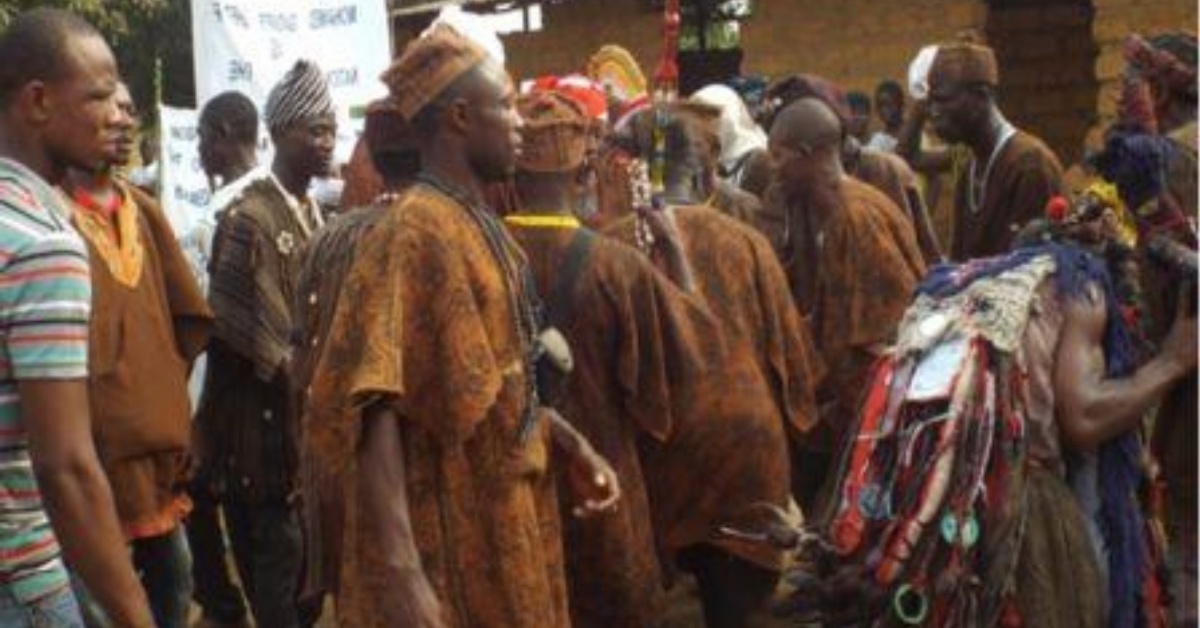According to a prominent traditional soothsayer herbalist in Waterloo, Sierra Leone is expected to receive both sudden shocking news and some good news in the near future, following the fall of the country’s iconic landmark, the Cotton Tree, on May 24.
The Cotton Tree, believed to be over 250 years old, collapsed during a heavy storm, coinciding with the 30-day mark before the Presidential elections in Sierra Leone.
Over the years, various conspiracy theories have surrounded the significance of this landmark, ranging from political motives to alleged ritual acts and superstitions.
Even a well-known Christian cleric, Pastor Francis Mambu, had recently predicted its fall, as recalled by his followers.
However, an influential herbalist named Manchawill, based in Waterloo, has made a remarkable claim about this historic event in Sierra Leone’s history. Manchawill suggests that the country will rise again after enduring a period of bad news and shocking events.
“For years, there have been people trying to bring down the country’s progress, but now we anticipate a significant loss of a former or current influential figure who has played or continues to play a leading role in the country,” the herbalist reveals.
“The Cotton Tree has been a symbol for many government officials, both past and present, with ministers and parliament members (MPs) passing through that place,” adds Pa Mancha.
While Mancha’s claim lacks substantial evidence and will likely be met with skepticism and dismissal, it resonates with some Sierra Leoneans. It is important to acknowledge that the country also boasts exceptional ministers and MPs who have served with utmost integrity.
Mancha explains, “Big stakeholders and leaders have come and gone, yet the Cotton Tree never revealed any signs. However, this time, it has given a clear indication of what is to come. The falling of a few branches in May is a sign of turmoil or temporary unrest.”
He further adds, “Most Cotton Trees, if not all, are inhabited by demons. You can observe the bats that frequently reside atop this particular tree, some are natural, while others belong to the dark world. This Cotton Tree serves as the headquarters for the demons of Sierra Leone.”
“In general, people use a cotton tree to perform spells, bury charms, and conduct rituals to harm others,” Mancha continues.
But Mancha’s most extraordinary claim yet will undoubtedly stir even the staunchest conspiracy theorists. “Even those who attain power in this country hold an interest in that Cotton Tree,” asserts Mancha.
Amidst these predictions of upheaval, Mancha also offers some positive news.
“The tree will regrow, symbolizing Sierra Leone’s prosperity,” foretells the herbalist. “It is better to plant and uproot the old. As traditionalists, once a new tree is planted, we can perform our ceremony, ensuring that any witchcraft will only harm the perpetrators.”
While the realization of Manchawill’s predictions remains uncertain, one thing is clear: the debate surrounding the significance of the fallen Cotton Tree will continue for as long as the age of the national landmark itself stood.




 4 Comments
4 Comments










To Allah be the Glory Ameen
Allah knows best about the fallen of our Cott tree.Not that this particular tree is better in the sight of Allah than others that have fallen down before this time,they are all equal.The fact that it was created by God, there should be nothing doubt it’s falling.Because Allah says ” All that are created, and are in existence, shall one day come to pass”. All we need is prayers for our country.Lets stop this negative thinking’s about our country.The Bible says” there is power in the tongue “
It is not about negative thinking even in the Bible Prophets prophesy about event to come. A prophet in Sierra Leone (Pst Mambu) once prophesy about evil activities of both present and past government taking place within our symbolic Cotton tree 🌲. Three days fasting was also anticipated by another Man of God for a peaceful and better Sierra Leone before and after election before this event happened. To God be the glory we are optimistic for a better Sierra Leone.
Let’s the will of God be done and I prayed that God almighty will give us a leader who will seek the interest of our country and it’s people Amen 🙏🙏🙏